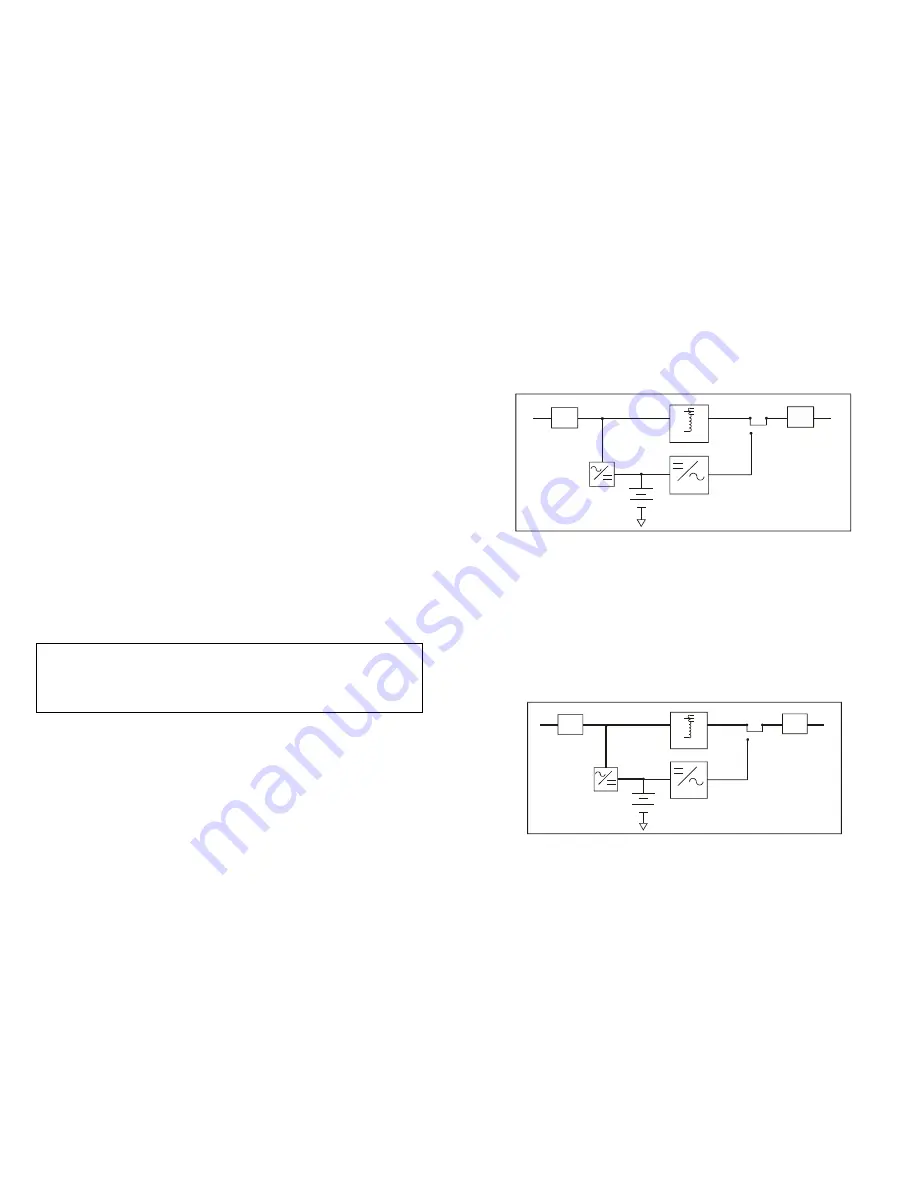
BATTERY FACTS
The battery is the only periodically serviceable parts in the UPS. An
expected life is approx. 3
∼
5 years. However, frequent long discharges or
ambient temperatures above 80
°
F/26
°
C
will shorten battery life. Therefore, it
is recommended to replace the batteries every 3 years after initiating the
unit.
Recharge batteries every 3 months if it is not in use because it may cause
batteries over-drain.
WARNING
Only a qualified technician should replace the battery. Batteries have
high short-circuit current capacity; mistakes in connecting or
disconnecting can cause connections to arc or weld and could cause
severe burns.
STORAGE
The UPS should only be stored if the battery is fully charged. Avoid storage
temperatures above 80
°
F/26
°
C
as battery life is significantly shortened.
Every 90 days remove the unit from storage and plug it in for 24 hours to
recharge the batteries. Batteries may be damaged if left in storage and not
recharged every 90 days.
IMPORTANT NOTICE
Please use same type and same rating of batteries for replacement.
Do not replace it with the battery that exceeds specified rating.
- 10 -
SYSTEM CONCEPT
The purpose of this chapter is to give you a better understanding about how
a UPS works..
1. Block Diagram
AVR.
INV.
CHA.
N.F.
N.F.
INPUT
OUTPUT
Fig. 1 shows how UPS works.
2. Normal Operation
There are two main loops when AC Utility normal the AC output loop and the
battery charging loop. The AC output gets power from AC utility input and
pass through AVR to support power to load. In the same time, the AC utility
input is converted by AC/DC CHA and support charging power to charge
batteries.
AVR.
INV.
CHA.
N.F.
N.F.
INPUT
OUTPUT
Fig. 2 shows how the UPS works when AC Utility normal.
- 3 -
Summary of Contents for ECO-220
Page 8: ...11...




























